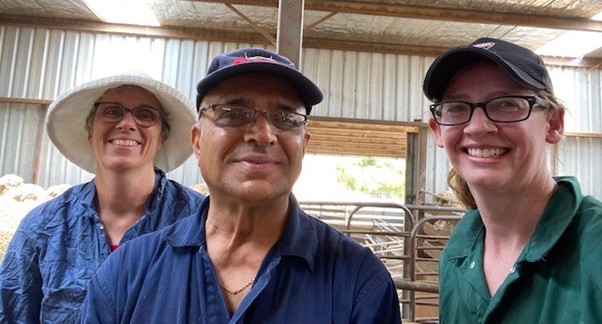Comparative study of laboratory vs clinical diagnosis of footrot
Full title: Longitudinal comparative study of the laboratory virulence diagnosis (Elastase test) with the clinical diagnosis of footrot outbreaks in NSW
Alison Collins, Karen Smith and Dr Om Dhungyel
Department of Regional New South Wales and University of Sydney
Summary
The Department of Regional New South Wales (Dr Alison Collins and Karen Smith) and the University of Sydney (Associate Professor Dr Om Dhungyel) teamed up on a research project co-funded by the McGarvie Smith Trust to determine the value of the laboratory elastase test to support the clinical diagnosis of virulent footrot in NSW flocks.
Footrot causes foot lesions in sheep, and depending on the virulence of the causative bacteria, can lead to severe underrunning hoof lesions and lameness. Virulent footrot is diagnosed at the flock level by examining the severity of lesions on the feet of 100 randomly selected sheep. However, foot lesions can be masked by recent treatment and dry environmental conditions, making clinical diagnosis difficult. The elastase laboratory test measures the virulence of bacteria isolated from affected feet, and can be used to support clinical diagnosis, but not all virulent Dichelobacter nodosus strains cause the severe foot lesions of virulent footrot. Environmental conditions and sheep breed are also important factors in the severity of foot lesions.
Importance of the research
This study evaluated how well the elastase test predicted footrot diagnosis across 184 suspect footrot flocks in NSW from August 2020 to December 2021. Elastase results were compared with clinical disease, taking into account the effect of recent treatment and environmental conditions. The study found that virulent footrot diagnosis was best predicted by the frequency of score 4 and 5 lesions (clinical severity of the disease on farm), the laboratory elastase test and environmental conditions. This study results are expected to help support the diagnosis in the field and were shared with district veterinarians and biosecurity officers. The funding from the McGarvie Smith Trust enabled us to provide strong scientific evidence supporting the current NSW footrot diagnosis procedures. Future studies are aimed at developing a more rapid test to support the diagnosis of virulent footrot.

About the researchers
Dr Dhungyel is an international expert in the control of footrot and has over 30 years of experience investigating lameness in sheep. Karen has just completed her PhD on footrot diagnosis and control and is keen to continue helping producers to control disease. Alison has focussed on animal disease diagnosis and control for more than 25 years.